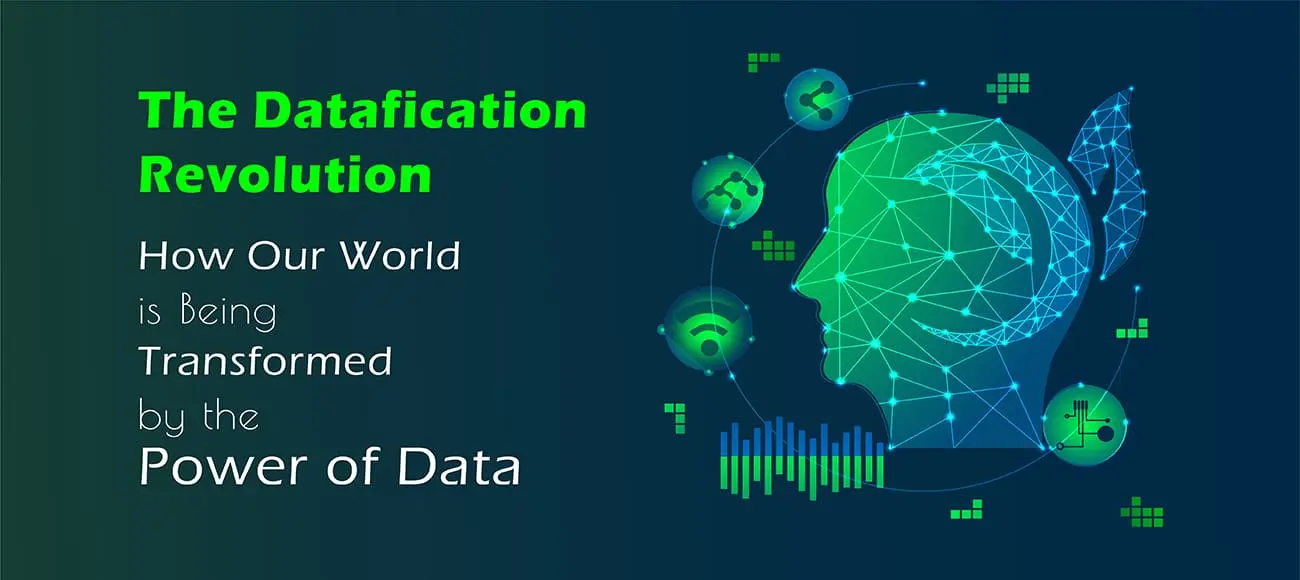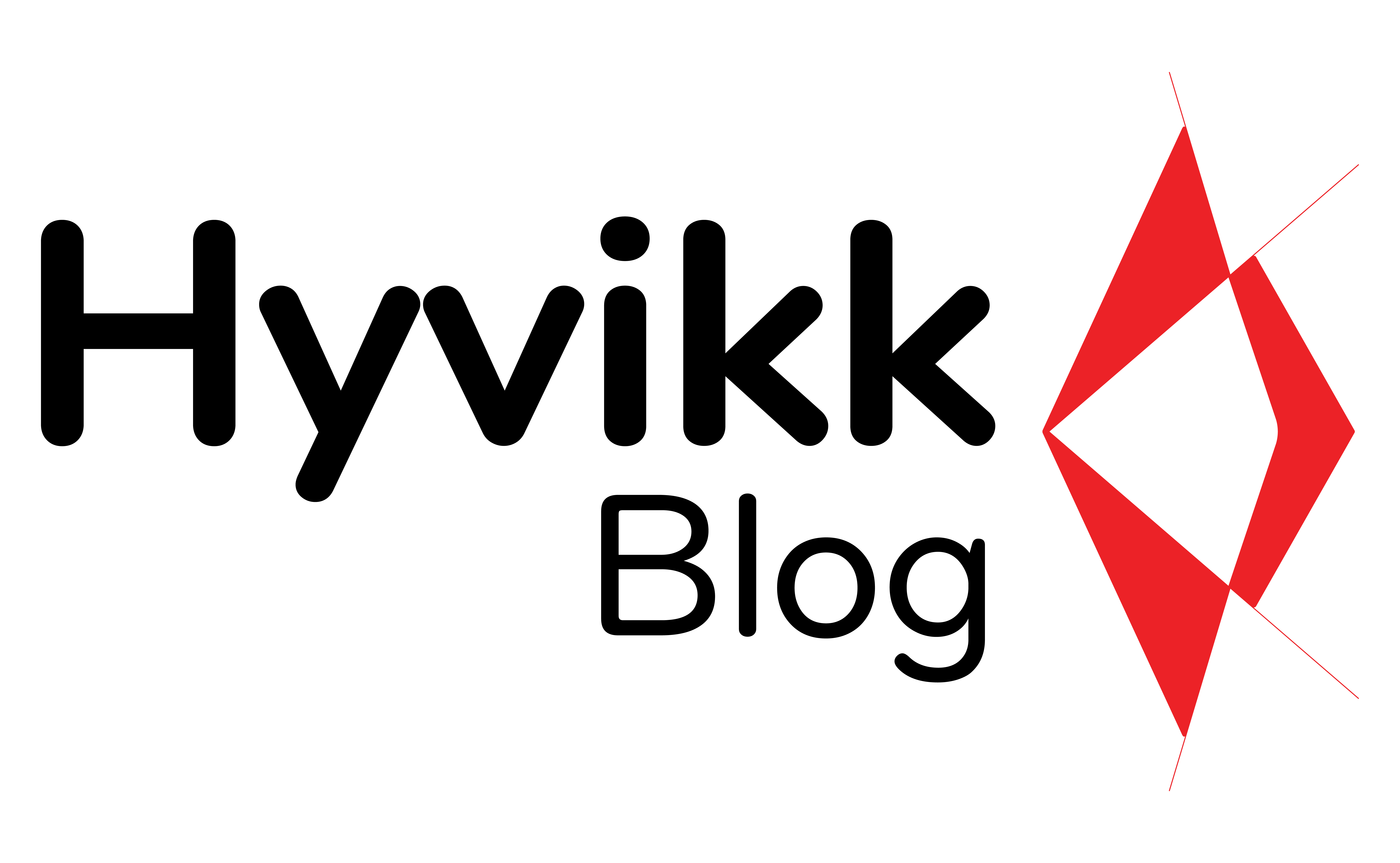
18 Aug From Raw Data To Valuable Insights: The Art of Datafication
Datafication is the process of transforming information into digital data that can be easily analyzed, processed, and shared. It involves the use of digital tools and technologies to capture, store, and analyze data, with the goal of extracting insights and value from that data. The process of datafication is becoming increasingly important in today’s world, as more and more industries rely on data-driven decision-making to remain competitive. The term datafication was introduced by Kenneth Cukier and Viktor Mayer-Schönberger to the broader lexicon in 2013.
The process of datafication involves several key steps:
- Data capture: The first step in datafication is to capture data. This can involve the use of sensors, IoT devices, mobile devices, social media platforms, or other tools that can collect data in real-time. For example, a fitness tracker can capture data on a user’s heart rate, steps taken, and sleep patterns, while a social media platform can capture data on a user’s preferences, behaviors, and interactions with others.
- Data Transformation: This may involve converting data into a structured format, such as a table or spreadsheet, or converting unstructured data, such as text or images, into a format that can be analyzed using machine learning algorithms.
- Data storage: Once data is captured and transformed, it must be stored in a way that allows for easy access and analysis. After the data has been transformed, it needs to be stored in a digital format. This can be done using various methods, such as databases, data lakes, cloud storage or other data management tools. The goal is to ensure that the data is easily accessible and can be quickly analyzed to extract insights.
- Data analysis: The next step in datafication is to analyze the data. This involves the use of data analytics tools, machine learning algorithms, and other statistical techniques to identify patterns, trends, and insights in the data. The goal is to use this analysis to make data-driven decisions that can improve business outcomes. This can involve tasks such as clustering, classification, and regression analysis.
- Data sharing: Finally, the insights gained from data analysis can be shared across an organization to inform decision-making. This can involve the use of dashboards, reports, or other visualization tools to present the data in a way that is easy to understand.
Datafication has become increasingly important in many industries, enabling organizations to capture, analyze, and leverage data in ways that were previously impossible. For example, in the healthcare industry, datafication can help providers better understand patient needs and improve treatment outcomes, while in the retail industry, datafication can help retailers optimize inventory management and improve customer experiences. As the amount of data continues to grow, datafication is likely to become even more important, enabling organizations to derive even greater insights and value from their data.
Datafication refers to the process of converting information into digital data, allowing it to be easily analyzed, processed, and shared. This process has become increasingly important in today’s world, as more and more industries rely on data-driven decision-making to remain competitive.
One example of datafication can be seen in the healthcare industry. Healthcare providers are increasingly using digital tools to capture and analyze patient data, allowing them to more accurately diagnose and treat medical conditions. Electronic health records (EHRs) have become a standard tool for healthcare providers, enabling them to easily capture and store patient data such as medical histories, test results, and treatment plans. This data can then be analyzed using data analytics tools to identify patterns and insights that can inform clinical decision-making.
Another example of datafication can be seen in the retail industry. Retailers are using digital tools to capture and analyze customer data, allowing them to better understand consumer behavior and preferences. For example, retailers can track customer purchases and use that data to make personalized product recommendations, or analyze shopping patterns to optimize store layouts and product placement.
Overall, datafication has become a critical process in many industries, enabling organizations to capture, analyze, and leverage data in ways that were previously impossible. As the amount of data continues to grow, it is likely that datafication will become even more important, enabling organizations to derive even greater insights and value from their data.
Technical Information:
- Data Collection: Data can be collected using various methods, such as surveys, sensors, and manual data entry. Sensors can be used to collect data from various sources, such as the environment, machines, and people. For example, sensors can be used to collect data on temperature, humidity, and air quality in a building.
- Data Preprocessing: Data preprocessing involves various techniques, such as cleaning the data, removing duplicates, and filling in missing values. This can be done using programming languages such as Python and R, and libraries such as Pandas.
- Data Transformation: Data can be transformed into a format that can be analyzed using machine learning algorithms. This can be done using techniques such as feature extraction, dimensionality reduction, and data normalization. For example, text data can be transformed into a format that can be analyzed using natural language processing techniques.
- Data Storage: Data can be stored using various methods, such as databases, data lakes, and cloud storage. Databases can be used to store structured data, such as tables, while data lakes can be used to store unstructured data, such as text and images. Cloud storage can be used to store data on remote servers, making it accessible from anywhere with an internet connection.
- Data Analysis: Data can be analyzed using various statistical and machine learning techniques. This can be done using programming languages such as Python and R, and libraries such as Scikit-learn and Tensorflow. Statistical techniques can be used to analyze data distributions, while machine learning techniques can be used to build predictive models based on the data

Sorry, the comment form is closed at this time.